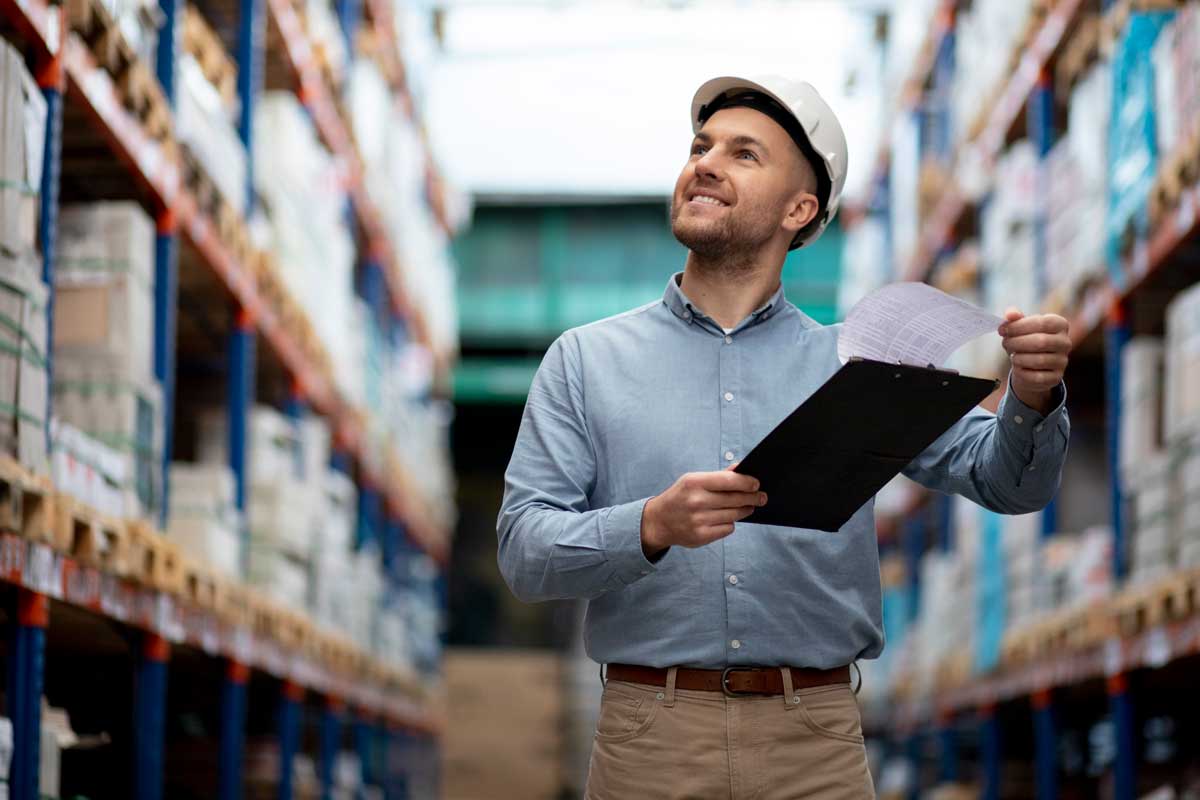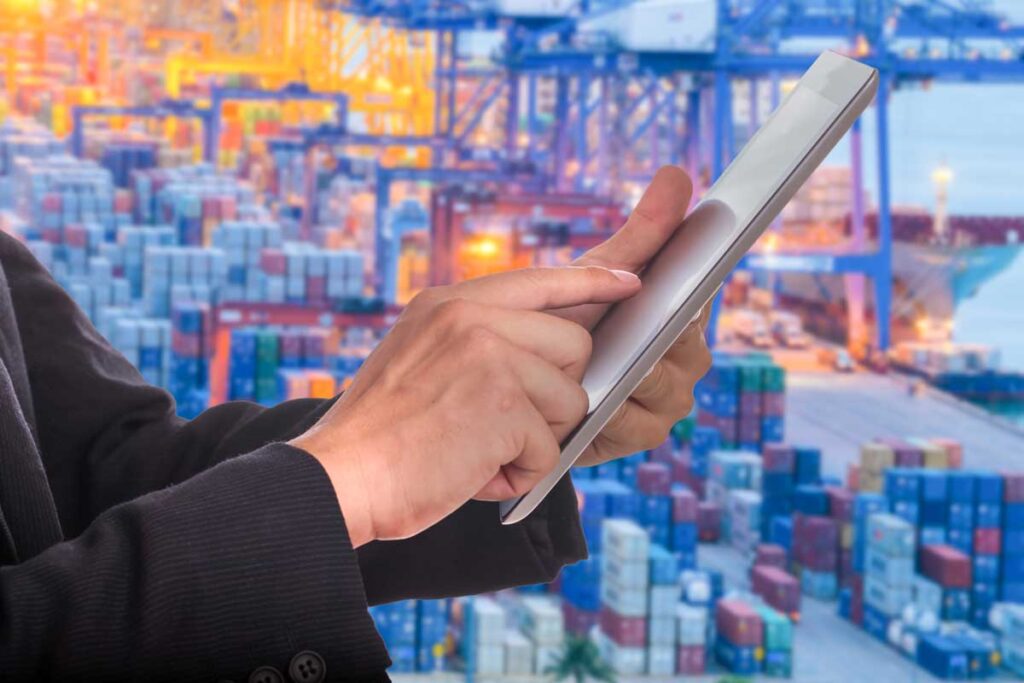Scaling a business requires a smart, efficient backbone to support that growth. One of the most overlooked yet critical components is how goods move from warehouse to customer, especially as order volumes and customer expectations rise. Integrated shipping and third-party logistics (3PL) services make it possible to meet demand, reduce costs, and expand without sacrificing quality or speed.
Here are five ways businesses in New York, NY, can scale more effectively by leveraging 3PL support and the best warehouse and transportation solutions.
Table of Contents
Key Takeaways
✔ 3PL providers help businesses scale without investing in their own warehouses or logistics teams.
✔ Integrated shipping technology improves delivery speed and reduces manual work.
✔ Accurate inventory management through 3PL reduces costly stock errors and delays.
✔ Regional warehousing and transportation support faster market expansion.
✔ Outsourcing logistics frees internal teams to focus on strategic growth efforts.
✔ Evaluating 3PL contracts carefully prevents hidden costs and service issues.
✔ Staying involved through reporting, SOPs, and communication maintains control when outsourcing.

1. Use 3PL to Expand Without Heavy Overhead
Many growing businesses struggle with warehouse costs, shipping logistics, and staffing. Third-party logistics (3PL) providers eliminate the need to build infrastructure from scratch. With the right partner, businesses can scale faster while controlling costs and improving service quality.
How Outsourcing Fulfillment Lowers Risk and Boosts Growth
- Avoids Long-Term Leases and Facility Costs: Managing storage in-house often means locking into long-term warehouse leases, even during off-peak months. A 3PL offers flexible space, so businesses only pay for what they use, which protects cash flow during slower periods.
- Skips the Hassle of Hiring and Training Staff: Warehousing and fulfillment require trained labor, which adds time and expense. A 3PL already has teams in place, reducing the pressure to recruit, train, and manage a full logistics staff.
- Reduces Equipment and Tech Investments: Forklifts, inventory systems, and security tools cost thousands and take months to implement. A provider offering the best warehouse and transportation services already has these systems in place, giving businesses a running start without the capital drain.
2. Improve Delivery Times with Integrated Shipping Tech
Fast delivery isn’t just a perk anymore—it’s an expectation. Businesses that can’t meet tight shipping windows risk losing customers to faster competitors. Integrated shipping platforms help simplify and speed up the entire fulfillment process.
Why Smart Shipping Tools Make Delivery More Reliable
- Automates Carrier Selection and Rate Shopping: Shipping software compares multiple carriers in real time to find the best balance of speed and cost. This helps businesses using warehousing and transportation services make quicker decisions without overpaying for rushed delivery.
- Enables Real-Time Order Tracking: Customers want updates at every step—from warehouse to front door. Integrated systems offer real-time tracking, so businesses can give accurate updates without chasing down information manually.
- Syncs with Sales Channels Automatically: Whether orders come from a website, marketplace, or retail partner, integrated systems connect everything. This ensures that inventory and shipping details stay consistent, improving accuracy and reducing missed shipments through the best warehouse and transportation network.
3. Increase Inventory Accuracy and Visibility
Inventory mistakes can sink margins and slow growth. Businesses need a clear view of what’s in stock, what’s running low, and what’s moving fast. 3PL providers offer systems and support to manage inventory with greater precision.
Why Better Inventory Control Prevents Costly Errors
- Uses Scanning and Barcode Systems for Accuracy: Manual counts leave room for error, especially during busy seasons. The best warehousing and transportation providers use barcode systems to track products in real time, reducing miscounts and misplaced stock.
- Accesses Cloud-Based Dashboards from Anywhere: Inventory data shouldn’t live in a spreadsheet. Cloud tools allow teams to check stock levels, shipment statuses, and reorder alerts from any device, making it easier to stay on top of demand.
- Spots Trends and Forecast Demand Faster: Integrated systems collect data on order history and seasonal trends. This allows businesses to stock smarter, avoid overbuying, and stay prepared for high-demand periods with help from a 3PL offering the best warehouse and transportation solutions.
4. Expand into New Markets with Less Risk
Reaching new regions or customer segments often requires a physical presence—but opening new locations is costly. A strong 3PL partner can help businesses test new markets without major investments. With scalable warehousing and transportation support, companies grow with confidence.
Why Regional Fulfillment Unlocks Market Growth
- Shortens Last-Mile Delivery with Regional Warehouses: Delivering from one central location leads to long transit times and higher shipping costs. A 3PL with multiple warehouse hubs brings products closer to end customers, reducing delivery times and improving satisfaction.
- Scales Distribution Without Infrastructure Spend: Setting up new warehouses requires months of planning and capital. Using a provider already equipped with the best warehouse and transportation resources allows companies to tap into new areas without delays or construction.
- Stays Compliant with Local Regulations: Shipping across state lines or into new countries involves tax, label, and customs regulations. A 3PL handles these complexities so businesses don’t face penalties or shipment holds.
5. Focus Internal Teams on Core Growth Work
Managing logistics internally drains time and attention from strategic growth. By outsourcing fulfillment, businesses free up resources to focus on marketing, product development, and customer relationships. A reliable warehousing and transportation partner becomes an extension of the team—not a distraction.
How Delegating Logistics Boosts Business Efficiency
- Frees Up Leaders to Focus on Strategy: Owners and managers shouldn’t spend hours managing freight quotes or resolving shipping issues. Outsourcing to a 3PL lets leaders focus on long-term planning and expansion while experts handle the day-to-day.
- Reduces Operational Bottlenecks: Delays in picking, packing, or routing often come from under-resourced teams. A logistics partner with the best warehouse and transportation systems can handle higher volumes without sacrificing accuracy or timing.
- Improves Customer Support Response Times: When logistics runs smoothly, customer service doesn’t get bogged down with “where’s my order” calls. This allows support teams to focus on high-value tasks and create a better overall experience.
How to Match 3PL Capabilities to Business Growth Goals
Third-party logistics should support more than just order fulfillment—it should actively drive progress. To scale successfully, a business must align its internal priorities with the strengths and specialties of its 3PL provider. When warehousing and transportation services reflect company goals, growth becomes faster, more efficient, and more sustainable.
1. Prioritize Fulfillment Speed to Improve Customer Retention
For businesses competing in e-commerce or retail, slow delivery can hurt customer loyalty. With retail e-commerce sales estimated to exceed 4.3 trillion U.S. dollars worldwide, efficient fulfillment is more critical than ever. A 3PL with regional distribution centers and integrated shipping tools can reduce last-mile delivery times.
2. Support Product Expansion with Flexible Storage Options
Launching new product lines often requires more storage, new inventory systems, and custom handling. A 3PL should offer scalable warehousing and transportation services that adjust to changing product dimensions, SKUs, and seasonal volumes. Flexible racking, climate control, and custom pick-pack solutions should match future product plans.
3. Enable Multi-Channel Sales Through System Integration
Selling across marketplaces, websites, and retail channels requires synced inventory and seamless fulfillment. Look for a 3PL with tech tools that integrate directly with sales platforms like Shopify, Amazon, and ERP systems. This ensures real-time updates and helps businesses maintain accurate inventory across all warehousing and transportation points.
4. Lower Shipping Costs by Optimizing Carrier Relationships
As order volume grows, so do shipping expenses. A well-connected 3PL can leverage carrier partnerships to negotiate better bulk rates and streamline logistics. The best warehouse and transportation providers also help businesses choose the right service levels for each order, reducing unnecessary surcharges.
5. Strengthen Brand Reputation with High Accuracy Rates
Missed, late, or incorrect orders damage customer trust. A 3PL focused on accuracy and accountability ensures orders are packed correctly and delivered on time. Businesses should work with warehousing and transportation teams that track error rates and use proactive quality checks.
6. Expand Regionally or Globally Without Heavy Capital Spend
Scaling into new regions often means navigating taxes, customs, and warehousing in unfamiliar markets. A global 3PL with reliable warehousing and transportation infrastructure can support market entry without the cost of opening new facilities. This enables businesses to test new territories with reduced financial risk.
How to Evaluate 3PL Contracts Before Signing
Contracts lay the groundwork for service expectations, pricing, scalability, and accountability.
With the global warehousing market size reaching USD 1.01 trillion in 2023, clearly defined service level agreements are more important than ever. Understanding what to look for helps businesses choose the best warehouse and transportation provider without surprises later.
1. Review Service Level Agreements (SLAs) Carefully
SLAs define how quickly orders must be picked, packed, and shipped—and what happens if those standards aren’t met. A strong contract should include measurable performance benchmarks and outline consequences for consistent failures. These agreements directly affect customer satisfaction and help maintain high standards for warehousing and transportation operations.
2. Understand Volume Commitments and Minimums
Some 3PL providers require a minimum number of monthly orders or storage usage. If a business experiences seasonal slowdowns or fluctuating demand, those volume commitments can become a costly burden. It’s smart to negotiate flexible terms that allow changes without heavy penalties, especially when evaluating the best warehouse and transportation partners.
3. Watch for Hidden Fees in Pricing Structures
Base fees may look reasonable, but extras can add up—such as charges for labeling, kitting, or handling returns. It’s important to ask for a full pricing breakdown that includes all services tied to warehousing and transportation. Clear visibility into billing helps avoid budget overruns and build trust from the start.
4. Clarify Terms for Scalability and Expansion
Growth should be supported, not restricted, by a logistics partner. Contracts should specify how storage space, staffing, or delivery capabilities can increase during peak seasons or expansion periods. A provider offering scalable warehousing and transportation solutions will outline timelines, costs, and limits for growth in writing.
5. Negotiate Early Termination and Exit Clauses
Circumstances can change—whether it’s outgrowing the provider or a mismatch in service. A good contract includes an exit clause with clear terms around notice periods and any associated costs. This gives businesses flexibility without locking them into a long-term deal that no longer meets their warehousing and transportation needs.
6. Confirm Data Access and Reporting Rights
A business needs access to fulfillment data to monitor performance and make smart decisions. Contracts should guarantee access to order reports, inventory counts, and delivery metrics in real time or at agreed intervals. This transparency is a sign of the best warehouse and transportation relationships, where both sides remain accountable.
How to Choose the Best Warehouse and Transportation Provider
Selecting the right 3PL partner in New York, NY, is essential to scaling efficiently. A qualified warehouse and transportation provider should offer more than just basic storage and delivery—they should integrate seamlessly with your operations and support long-term growth. Use the following criteria to evaluate potential partners:
1. Look for Proven Industry Experience
- Seek providers with a track record in your industry, such as e-commerce, consumer goods, or B2B distribution.
- Ask for references or case studies from similar businesses they’ve supported.
- Evaluate their familiarity with your specific fulfillment requirements, such as product handling or compliance needs.
2. Evaluate Technology Capabilities
- Confirm that the provider offers integrated systems for order management, inventory tracking, and shipping automation.
- Look for compatibility with your e-commerce platform, ERP, or sales channels (e.g., Shopify, Amazon).
- Ask whether they provide real-time visibility into inventory levels, order status, and shipment tracking.
3. Prioritize Strategic Warehouse Locations
- Choose a provider with warehouse facilities near key customer markets to reduce shipping times and costs.
- Ask about the number and geographic spread of their fulfillment centers.
- Ensure their transportation network supports national or regional delivery based on your growth goals.
4. Check Scalability and Flexibility
- Assess their ability to handle increased order volume during peak seasons or promotional events.
- Confirm whether they offer flexible storage options, such as racking, climate control, or zone picking.
- Ask how quickly they can adjust space, labor, or services to match your changing needs.
5. Understand Cost Structure and Billing Clarity
- Review their full pricing breakdown, including fees for storage, pick-and-pack, labeling, returns, and transportation.
- Ask about minimum volume commitments, contract terms, and penalties for early termination.
- Look for straightforward billing practices that scale with your business rather than surprise charges.
6. Review Security and Compliance Standards
- Verify that the facility uses 24/7 surveillance, controlled access, and loss-prevention measures.
- Ensure compliance with local, state, and federal regulations, including tax, labeling, or customs requirements.
- Ask about protocols for handling hazardous, perishable, or sensitive goods if applicable to your products.
Frequently Asked Questions (FAQs)
What’s the difference between 3PL and 4PL logistics providers?
A 3PL handles physical logistics services like warehousing, inventory management, and shipping. A 4PL acts more like a strategic consultant, managing multiple 3PLs and overseeing the full supply chain on behalf of the business. While both offer value, companies seeking the best warehouse and transportation support often start with a strong 3PL partner before scaling to a 4PL model.
Can a small business benefit from 3PL services?
Yes, even small businesses can benefit from outsourcing to a 3PL, especially during periods of growth or seasonal spikes. Working with a provider that offers scalable warehousing and transportation solutions can reduce overhead while improving service quality. Many of the best warehouse and transportation partners offer flexible plans tailored to smaller operations.
How secure is inventory in a 3PL facility?
Most 3PL warehouses use advanced security systems, including 24/7 surveillance, restricted access, and digital inventory tracking. Choosing a provider with strong security protocols is critical to protect valuable goods in any warehousing and transportation setup. Look for the best warehouse and transportation providers who offer transparency in how inventory is stored and monitored.
What industries typically use 3PL services?
Industries like retail, e-commerce, consumer goods, pharmaceuticals, and industrial equipment often rely on 3PLs. Each has unique needs, but all benefit from streamlined warehousing and transportation processes that improve speed and reliability. The best warehouse and transportation providers can tailor services to meet specific industry standards and compliance requirements.
How long does it take to get started with a 3PL provider?
Implementation timelines vary but usually range from a few weeks to a couple of months, depending on complexity. This includes system integration, inventory transfer, and testing fulfillment processes. Businesses partnering with the best warehouse and transportation providers often receive onboarding support to shorten the setup period and avoid disruptions.
Streamline Growth with 3PL Warehouse By Best!
When it’s time to scale smarter, 3PL Warehouse By Best delivers the warehousing and transportation support that growing businesses need. Based in New York, NY, our team brings precision, flexibility, and real-time logistics management to the table—so operations stay lean while service stays sharp. With a focus on fast onboarding, secure inventory handling, and reliable fulfillment, 3PL Warehouse By Best is built to help companies thrive in competitive markets.
Let a trusted partner handle the logistics while teams focus on what drives revenue. Call us today!

